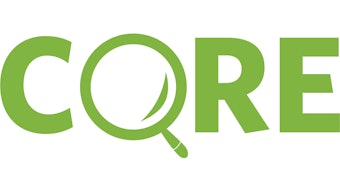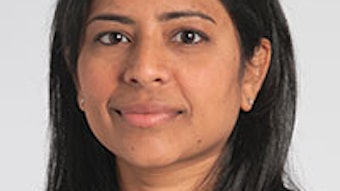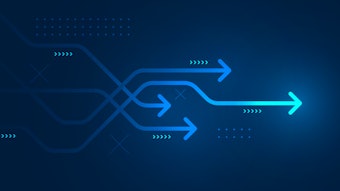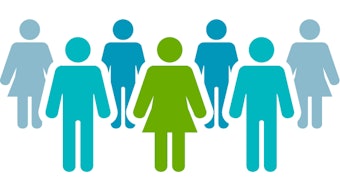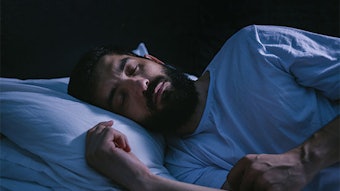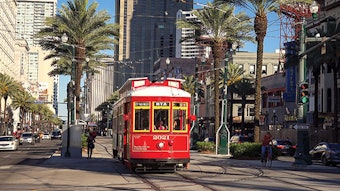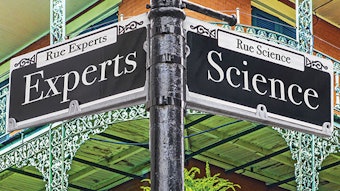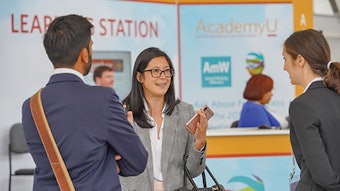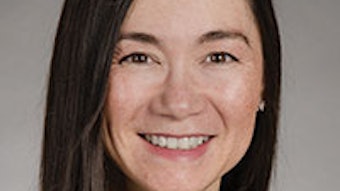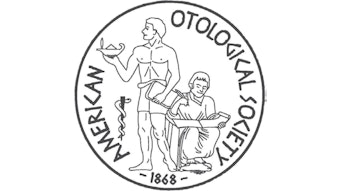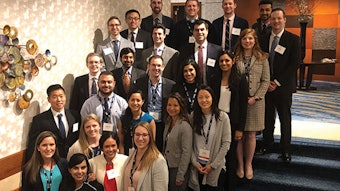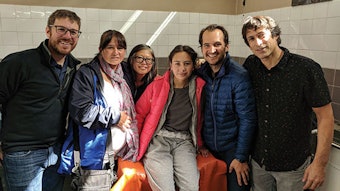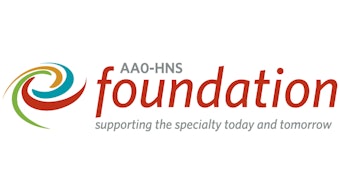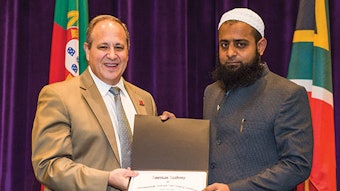Ringing the bell for quality and evidence
The AAO-HNSF 2005 Annual Meeting was held in Los Angeles, CA, (where we will return in 2021). Even early in my career, I recognized the unparalleled opportunities available by getting involved in AAO-HNSF courses and panels.
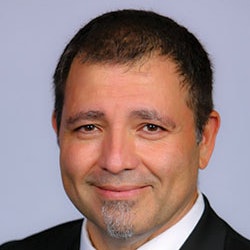 Albert L. Merati, MD
Albert L. Merati, MD
AAO-HNS/F Past President
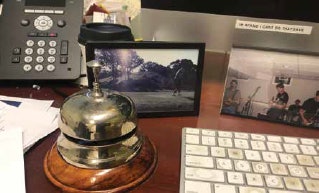 The commemorative concierge bell from the AAO-HNSF 2005 Annual Meeting panel I moderated still sits on my desk. Just behind this is a photo of the late Bob Toohill teeing off at Eagle Springs, WI, in 2002. It is one of my most cherished memories.
The commemorative concierge bell from the AAO-HNSF 2005 Annual Meeting panel I moderated still sits on my desk. Just behind this is a photo of the late Bob Toohill teeing off at Eagle Springs, WI, in 2002. It is one of my most cherished memories.The audience seemed to like the gimmick (let’s be honest, the entertainment value is usually appreciated a few days into a medical meeting). The panelists focused on what it is we know from reasonable attempts at investigation and scholarship as opposed to what we have come to personally conclude from experience in the absence of evidence. Let us be clear: All levels of evidence-based medicine can be valuable and indeed necessary in the practice of medicine. We can’t study or investigate everything and certainly can’t always do it exhaustively. Recall that the request to my panelists that day wasn’t to avoid opinion or statements based on weak or incomplete evidence but was instead a call to be candid about the presence or absence of evidence in our own scholarly presentations. As you can imagine, some of our speakers did well with nary a “ding,” and some achieved a bit less silence.
Our AAO-HNS/F invests tremendous resources in the pursuit of research and products to help our patients, our community of otolaryngologists, and of course, the greater good beyond otolaryngology-head and neck surgery. The Clinical Practice Guidelines are our most downloaded papers in all of Otolaryngology–Head and Neck Surgery. The CPGs are evidence-driven collaborations from a broad team of stakeholders that help us separate the helpful and often colorful aspects of experience and anecdotalism in medicine from the actual peer-reviewed evidence in important areas, such as tonsillectomy in children and evaluation of the neck mass in adults. Like most of you, I have no qualms about practicing medicine armed with a career of anecdotes and clinical sensibility—but this is not enough. As the burdens (and opportunities) of reporting on quality and cost grow, we will need more and more data and evidence to support what we do and how we take care of patients. The Reg-entSM clinical data registry is a great example of this investment made by our AAO-HNSF.
My hope is that we can continue to blend the art of medicine with the knowledge and evidence that comes from well-supported scholarship. We should recognize the difference between what we think or feel from experience and what we know from rigorous scholarship, and remember this in our discussions with patients, trainees, and fellow physicians. This is what the bell symbolizes for me.
